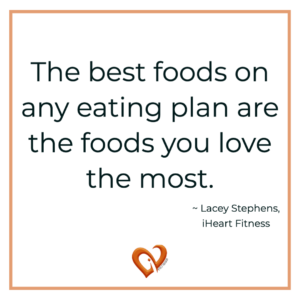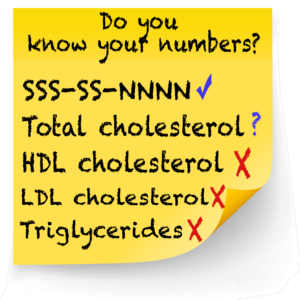Indulge In You!
One of the most overlooked components in an overall fitness strategy is indulging in you.
Indulging in you means taking the time or making the time specifically to focus on you and your needs.
Between the kids, all their activities, you working to getting in shape yourself, the rest of your activities, and maybe you help care for your parents. Then there’s work and church and the list goes on and on. All these elements make up your world. I know your world won’t stop turning when you shift your focus to yourself, but you make a conscious effort to become the absolute center of your world.
Think about it like this. You need to drop the kids off at practice, take the dog to the groomer and take your parents dinner all before you go to the gym to workout.
You grab dinner for your mom and dad, you grab your gym bag, and the kids, and the kids grab the dog. You head out the door and jump in the car.
About half way to your parents’ house (first place you’re going), your car stops. After saying ‘this can’t be happening’ a half a dozen times, you realize your car is out of gas.
That means cold dinner for mom and dad (if you’re able to get it to them at all), no practice for the kids, the dog won’t get groomed, and no workout for you. All because you ran out of gas.
Now imagine you’re the car.
If you stop, if you run out of gas, the same thing happens. Everything else in your world stops too.
So when you indulge in you, you’re making sure you’re centered, focused and have a full tank so you (and your world) can keep turning.
A Quick Way to Manage Stress
Now there are several ways to indulge in yourself, but today I want to take a few minutes to talk about relaxing and some of the benefits relaxing offers.
Let’s jump right in…
Close your eyes, take a deep breath in through your nose and blow it out slowly through your mouth. Do that again. Breathe in through your nose and out slowly through your mouth. One more time. In through your nose and out slowly through your mouth. How good does that feel?
Stress and High Blood Pressure
In that short amount of time, when it comes to your heart you can immediately feel
your breathing slowing down and your heart rate dropping.
More than 100 million adults in the US have high blood pressure. Even if your blood pressure is only temporarily high, you can still benefit from relieving stress. You don’t necessarily feel your blood pressure going down, but that should be happening.
And relaxing plays a role in maintaining normal blood sugar (A1C) too.
Both of these, normal blood pressure and normal A1C help keep your risk for heart disease down.
And as far as your body goes, did you feel the tension in your muscles start to go away?
Relaxing also increases blood flow to major muscles, which helps deliver the nutrients they need.
Some of the other benefits of relaxing is that relaxing helps
- Lower fatigue
- Improve concentration
- Improve your quality of sleep and it also helps
- Improve your mood.
So you can imagine how good my mood was when I went to Honolulu. It was absolutely, positively beautiful in Hawaii. The weather was phenomenal. I was so relaxed, of course I didn’t want to leave. Just thinking about how beautiful and peaceful it was relaxes me.
Relaxation Quotes
 William James said, “The greatest weapon against stress is the ability to choose one thought over another.” Relieve stress by choosing your favorite memory or visiting your favorite place in your mind. It’s your weapon; the choice is yours.
William James said, “The greatest weapon against stress is the ability to choose one thought over another.” Relieve stress by choosing your favorite memory or visiting your favorite place in your mind. It’s your weapon; the choice is yours.
Hawaii helped my mood and my mind, but I know I got incredible benefits for my heart and my body too. One day I took a scenic walk along the Makapu’u Trail. It was exercise, but it was very relaxing too.
I think the scenery may have been even more beautiful coming back down from Makapu’u Point. And the waves were exhilarating. It was so much fun. I just didn’t want it to end.
Going to Hawaii is not the only way to relax. But I definitely take advantage of every opportunity I can to indulge in me. I don’t apologize for it. And neither should you. Whatever you do, take the time to indulge in you! ~ Lacey Stephens, founder iHeart Fitness.
Here’s my point. There’s so much going on in the world today, and it doesn’t take much to spread yourself too thin. Eating and exercising are very important aspects of your fitness. But in order to have a complete fitness strategy you HAVE to learn to indulge in you, which definitely includes relaxing.
Some people say they don’t have time. Some people say they can’t make the time because they can’t deviate from their schedules. If you’re one of those people, ask yourself this – can I really afford NOT to?
Regardless of how you relax, be sure to take the time or make the time to focus completely on you.
Your heart and your body will thank you for it!
References:
[1] Mayo Foundation for Medical Education and Research (MFMER) (2021, Feb. 26).
Relaxation Techniques: Try These steps to reduce stress. (n.d.). Retrieved September 9, 2021, from https://www.mayoclinic.org/healthy-lifestyle/stress-management/in-depth/relaxation-technique/art-200453
 The question is ‘why?’ There are actually multiple layers to the answer but motivation is at the heart of it all. Please don’t misunderstand. Specific goals are absolutely necessary, but goals are the destination. Motivation is the vehicle that gets you there. Goals do need to be SMART. They need to be:
The question is ‘why?’ There are actually multiple layers to the answer but motivation is at the heart of it all. Please don’t misunderstand. Specific goals are absolutely necessary, but goals are the destination. Motivation is the vehicle that gets you there. Goals do need to be SMART. They need to be:

 While having normal cholesterol levels are good, there’s no substitute for knowing your numbers. Make sure you get the following individual numbers from your health care professional:
While having normal cholesterol levels are good, there’s no substitute for knowing your numbers. Make sure you get the following individual numbers from your health care professional: